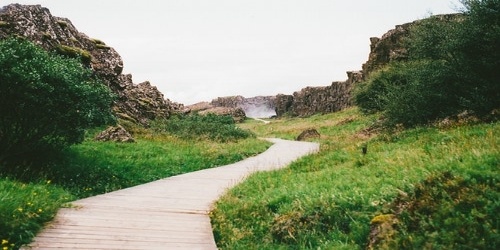Driving a lot of traffic to your website, but struggling to convert your traffic to leads?

Inbound Marketing is no longer a 'new' term within the marketing industry, and many businesses of all sizes have now identified the need to move their marketing efforts to the digitalsphere. But surprisingly, in the 2017 State of Inbound report, marketers are still delivering less quality leads to their sales teams.
Over my years working within inbound marketing, I've come across many CEOs/CMOs who still believe that marketing is 'fluffy', and social media is 'just something your teenage daughter plays on'. With this opinion, it means their marketing team's value diminishes, and focus tends to shift from attracting and converting quality leads, to tracking only the very top of the marketing funnel.
In this blog, I'm going to explain how creating a killer inbound conversion path will make sure you can get the most out of your website by capturing leads at every opportunity in the buyer journey.
First things first...

Capturing leads from an inbound perspective requires a well thought out strategy, which is focused on a high-quality offer.
According to a study from HubSpot, 47% of B2B buyers view 3-5 pieces of content before engaging with a sales rep. Content continues to be king when it comes to turning prospects who are in the earlier stages of the buyer journey, into warm leads.
Take a look at your buyer personas' common pain points. How could you answer these with educational, non-salesy content?
Creating content doesn't have to be difficult, and there's probably a strong chance you already have product data sheets, case studies, and other collateral that you can easy transform into a webinar, eBook or whitepaper...
Need an example? Why not browse our eBooks and whitepapers...
Catch their eye
So you've got the content on your website, but how do you go about attracting downloads?
The first step in capturing a lead on your website is a well worded and eye-catching call-to-action. Your CTA needs to include a brief and actionable overview of the offer you're going to be sending them to.
Don't just put your CTAs where they look the most aesthetically pleasing. Your CTA positioning needs to be aligned with the following best practices:
- Make sure to put the CTA where your visitors are most likely to be looking - don't hide them away miles below the fold or in a crowded sidebar
- Ask yourself, is this offer relevant to the content on the page it's sitting on?
- Don't give your visitors too many options - keep the number of calls-to-action on a page, whether that is for premium content or pointing people towards getting in touch, to a minimum.
Capture their details
Once your visitor has clicked on the CTA, the next step is to remove all distractions and entice the prospect to exchange their details for your fantastic offer.
How do you do this?
First steps towards a successful landing page is its content, how does it look at first glance? There are many sure-fire ways to have someone bounce straight off your landing page that include:
- Too much text!
There is nothing more off putting when landing on a page than hordes of unformatted blocks of text. Remember that the visitor needs just enough content to wet their appetite and be pushed of the edge. Top tip! Use bullet points to break up walls of text whilst still getting vital information across
- No image
It's a well-known fact, the human brain processes an image 60,000 times faster than reading text. Use this to your advantage and always ensure that your image explains exactly what it is you're offering. - Asking too many questions
After spending a while pulling together the research, and crafting a perfect piece of content, it can be easy to want to get as much information as possible in return for your masterpiece. It's important to remember to put yourself in your persona's shoes. Contact details are a high valued currency in this current climate, how many questions is your piece of content worth?
- Too many distractions
Another top conversion pointer for a well-optimised landing page is to remove all distractions on the page. This includes any other calls-to-action and the top navigation. Your landing page must have one clear purpose, and that is to convert your visitors.
Release them back onto your website
Thank you pages are often overlooked when it comes to a well-optimised inbound conversion strategy - but they can be a huge influence on what happens next when your lead has converted.
The first step is to return all normal formatting to the web page, such as the top and footer navigation, and any templated sidebars. Let your new lead know how they are going to receive the offer, whether this is via email or hosted on the page itself.
Use your thank you page to offer up relevant, personalised content to your new lead. For example, if your lead has just downloaded a guide to keeping their payments safe online - why not direct them to a blog surrounding the subject, or exclusive sign up access to another premium offer such as a corresponding webinar?
Steer clear of inline thank you messages and generic thank you pages! The more personalised your marketing efforts - the better your return will be.
Get started with content marketing for your business with our free handy content editorial calendar.
